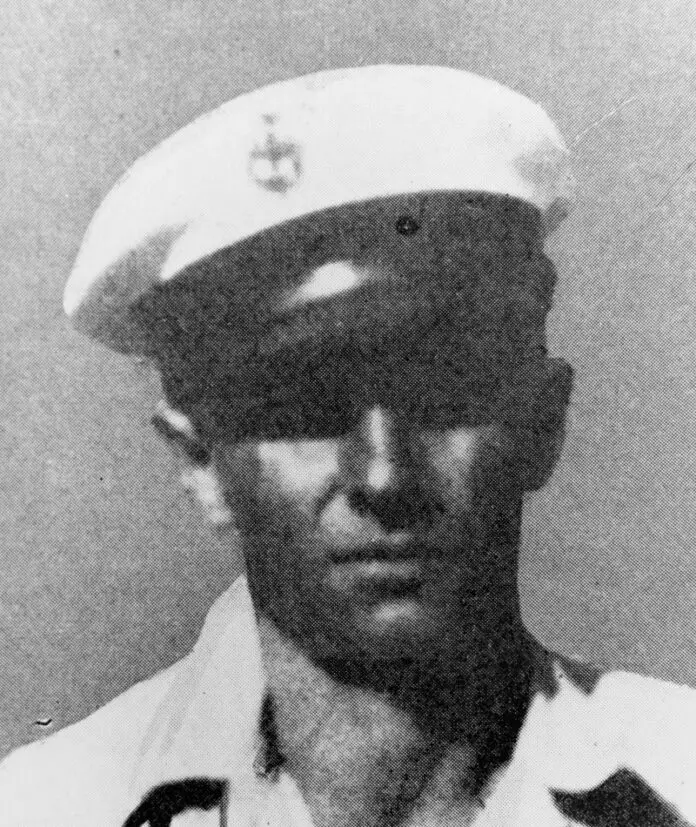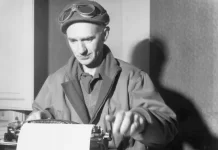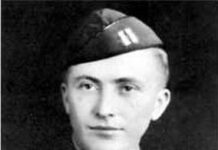Born in Prolog, Austria on Dec. 3, 1893, Peter Tomich lost his life aboard the USS Utah when the ship was torpedoed during the Dec. 7, 1941, attack on Pearl Harbor. But it took the United States 64 years to locate family members in order to make a presentation of the Medal of Honor awarded by President Franklin D. Roosevelt posthumously to the World War II hero.
It is not clear as to the specific reason why the state of New Jersey was credited with Chief Tomich’s Naval career, but the Medal of Honor was presented aboard the USS Enterprise after the United States was successful in locating family members in 2006, while the aircraft carrier was in the southern Adriatic city of Split, in Tomich’s native Croatia.
Born in Prolog, Austria, June 3, 1893, in what later became Yugoslavia, Tomich immigrated to the United States in 1913 and joined the US Army in 1917, then enlisting in the Navy in January 1919. At that time, he was assigned aboard the destroyer Litchfield. By 1941, he had been promoted to the rank of chief, and was on board the USS Utah, a training and target ship. The ship was moored at Pearl Harbor Dec. 7, and Tomich was on duty in the boiler room when the ship was struck. As the ship began to capsize, the sailor remained below, securing the boilers and assuring his other sailors escaped, thereby losing his own life. He had given two years to the United States as a soldier during World War I and 22 years as a Sailor before his death in 1941.
The USS Utah was one of the first ships struck by the Japanese during the Pearl Harbor early morning assault. Some say it was the huge wooden planks covering the ship’s deck that made the Japanese pilots mistake the training ship for an aircraft carrier, their primary target.
At the time the torpedo struck the ship, the crew was in the process of hoisting the American flag on the fantail.
Below decks, with water rushing towards the boilers, Chief Tomich yelled to his crew to evacuate, and feeling the ship slowly turning on its side, the experienced Chief knew there were scant moments for the crew to escape. Crew members followed his commands, and rushed up the ladders, the Chief remaining behind to set gauges, release stem and make other attempts to stabilize the boilers. With the ship listing at 40 degrees, emerging crew members also met the machine-gun volleys from the Japanese strafing of the deck; more men were trapped under the timbers that had covered the deck.
Though he lost his life as the ship completely rolled over, Chief Tomich made it possible through his last minute efforts securing boilers to prevent the ship from possible explosion and a fire sailors would not be able to survive. Hundreds of sailors were able to swim to safety because of his efforts.
The USS Tomich (DE-242) an escort ship, was named for the Chief in 1943, serving until 1974.
The Tomich Steam Propulsion Training Facility continues to train thousands of sailors at the Great Lakes Naval Training Center and Tomich Hall is located at the US Navy Senior Enlisted Academy in Rhode Island.
Chief Peter Tomich’s Medal of Honor reads:
For distinguished conduct in the line of his profession, and extraordinary courage and disregard of his own safety, during the attack on the Fleet in Pearl Harbor by the Japanese forces on 7 December 1941. Although realizing that the ship was capsizing, as a result of enemy bombing and torpedoing, Tomich remained at his post in the engineering plant of the U.S.S. Utah, until he saw that all boilers were secured and all fireroom personnel had left their stations, and by so doing lost his own life.”
Other New Jersey Recipients of the Medal of Honor



